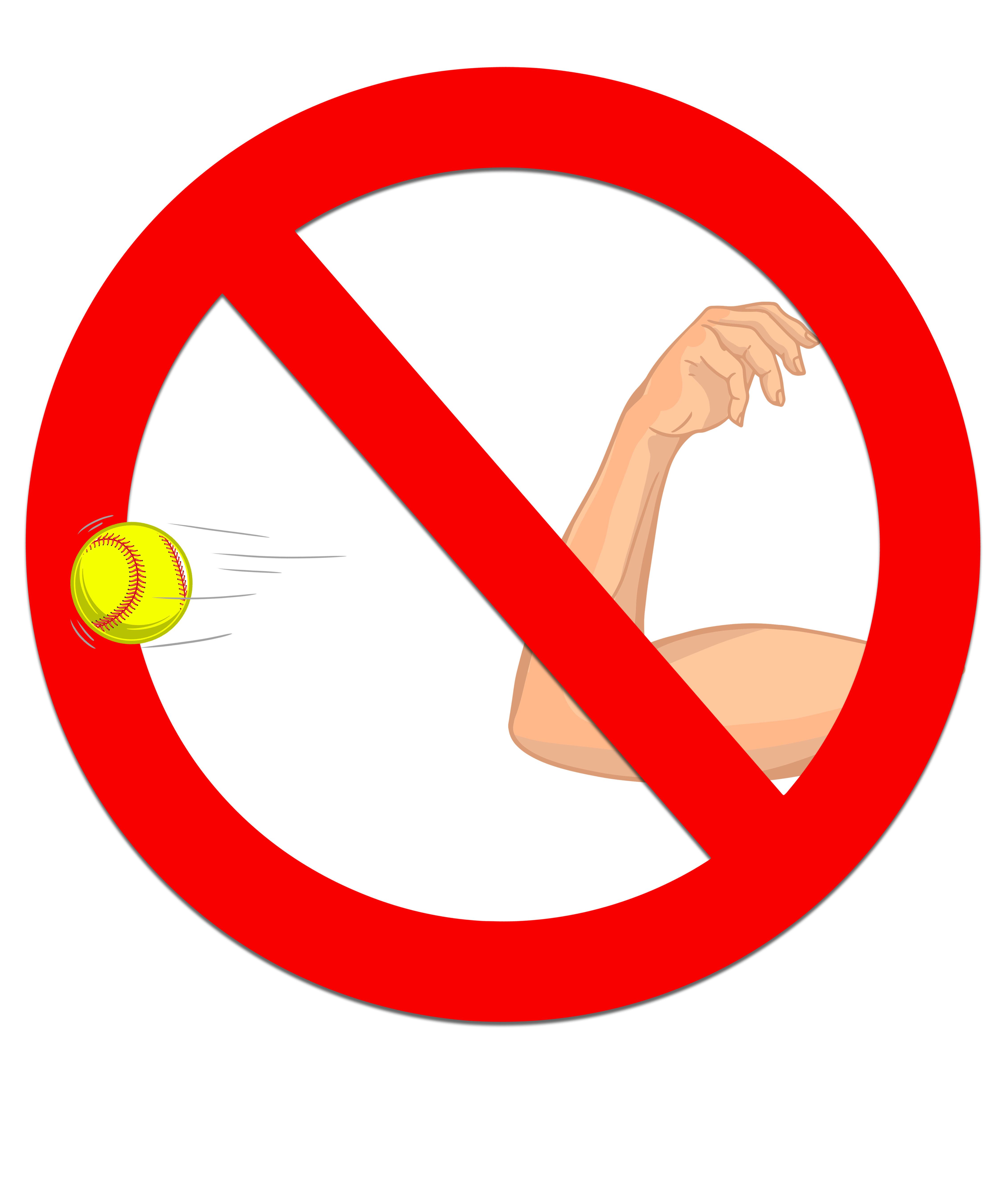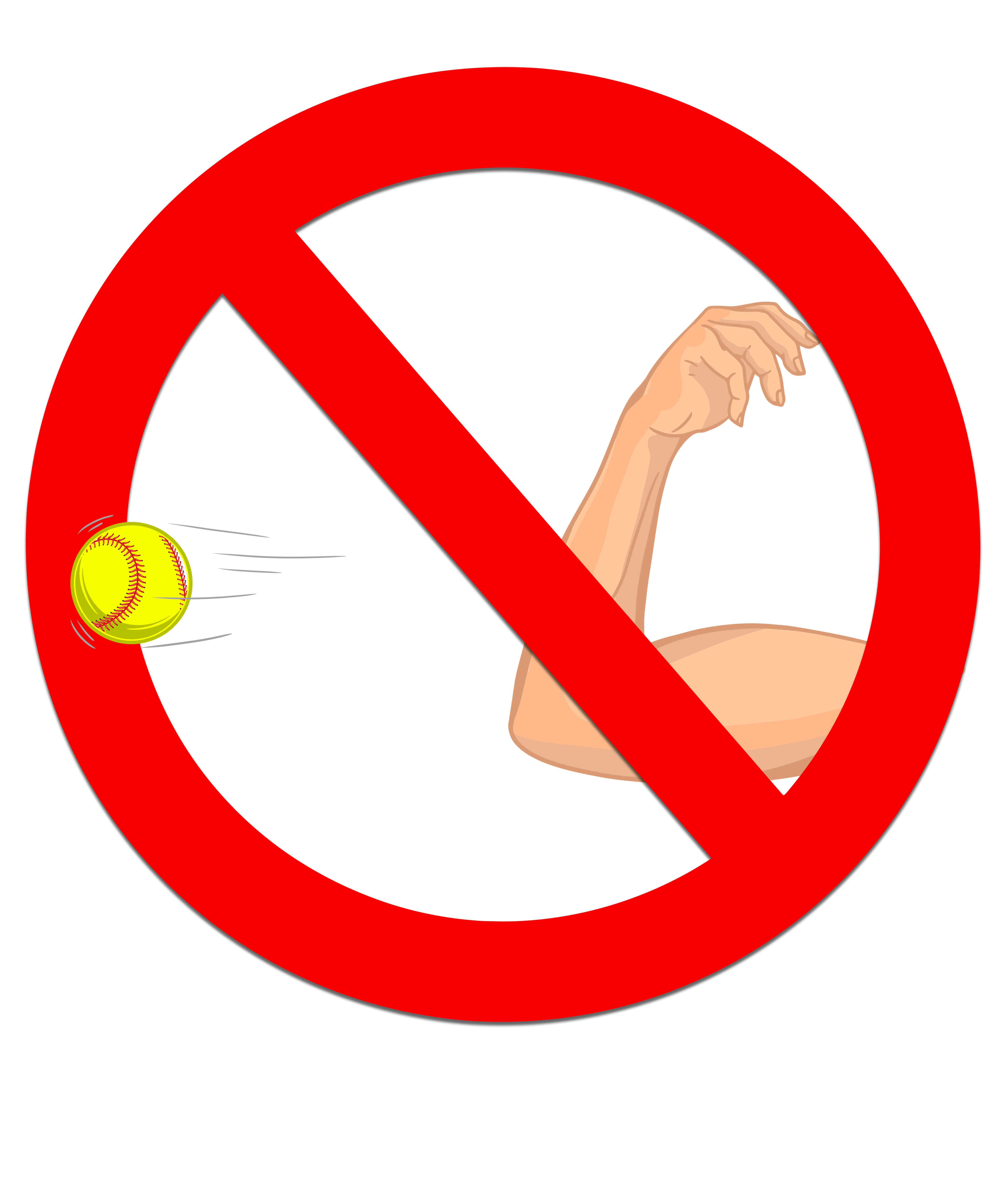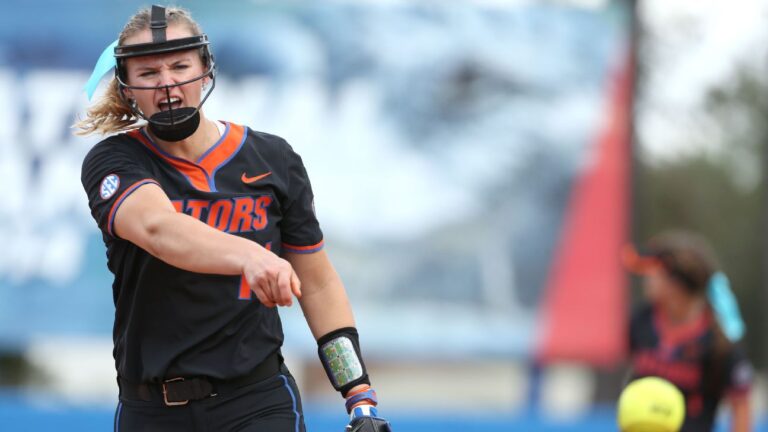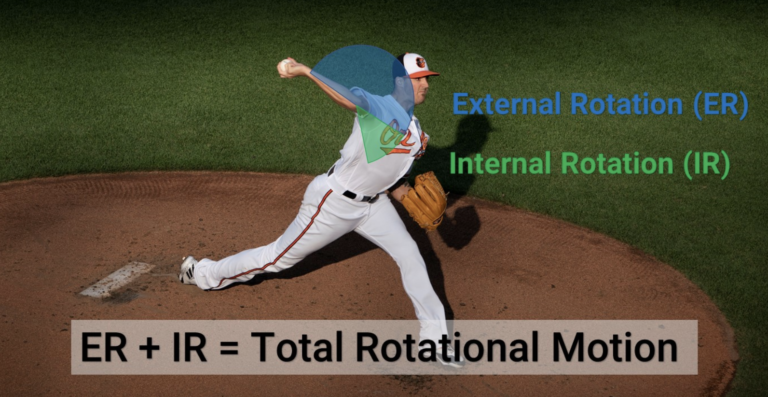What IS Hello Elbow?
I see people arguing on Facebook and on forums quite often about Hello Elbow versus Internal Rotation. A lot of people think HE is the finish that comes after a pitch is delivered and point to pitchers like Jennie Finch, saying that some of the greats threw that way. However, HE is so much more than that.
Before we get into why Hello Elbow is not real, let’s first define it.
Hello Elbow is not just a release, it is a collection of softball pitching myths that are inefficient and frankly downright harmful for the pitcher and her arm. In Hello Elbow, you are supposed to:
- Get open (sideways) as early as possible
- Land at a 90 degree angle (or close to it) and make a lane for the arm
- Point the ball towards second base at 9 o’clock
- Have a stiff, straight arm
- Wrist snap
- Keep the hips open or slam the door shut (this can vary by pitching coach. But there is no talk of offset stretch. It’s either they want you to keep the hips open and kick a cone behind you, do a flamingo (or “Figure 4”) or they want you to slam the hips shut facing the catcher
- Follow through with a high elbow, usually with the humerus parallel to the ground and forearm perpendicular to the ground.
When I discuss Hello Elbow, I am defining all of those mechanics as part of the package. The creating a lane, the ball facing second, the wrist snaps. Sometimes even the damaging hitch hiker “screwball”- however some IR coaches teach this as well.
Most internal rotation coaches push back on all of this misinformation. And when I say misinformation, I truly mean it. It’s not how Eddie Feigner pitched back in the 50’s and its not how the most elite pitchers throw today.
I’ve written on this topic before:
Why Hello Elbow is Ineffective
Let’s also define internal rotation: the act of the throwing arm brushing against the body, causing deceleration of the humerus, leading into pronation of the forearm.
Pronation (palm down):
Internal rotation is not simply pronating, and hello elbow is not simply a high finish. It’s the mechanics of rotating an external part (the arm) toward the mid-line of the body. Can you internally rotate and then do a Hello Elbow finish? YES! A lot of elite pitchers do so, Finch included. It’s because it’s how the body is designed to move.
So we are not talking about just a high finish. We are talking about the other pieces of hello elbow that consist of a wrist snap and no internal rotation. Just a straight wrist snap into a high elbow with no whip.
Internal rotation INTO a high follow through. AKA NOT Hello Elbow mechanics:
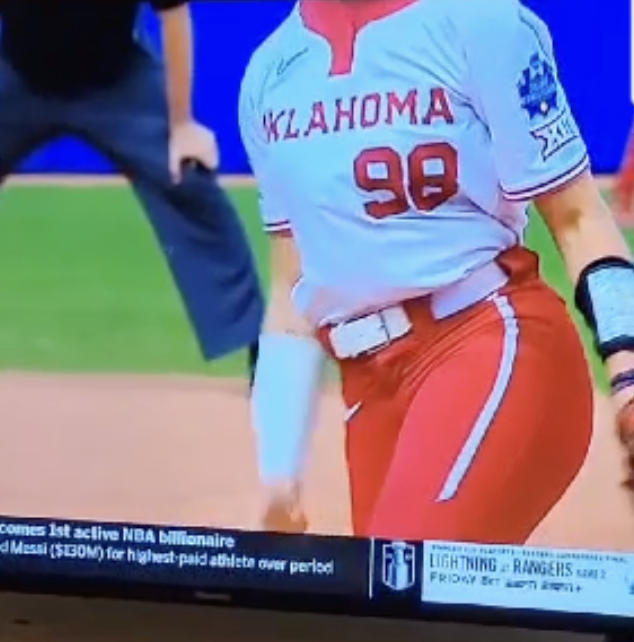
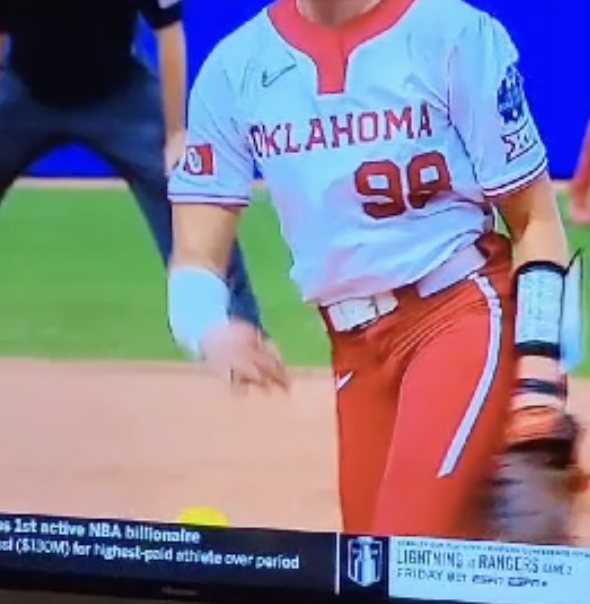
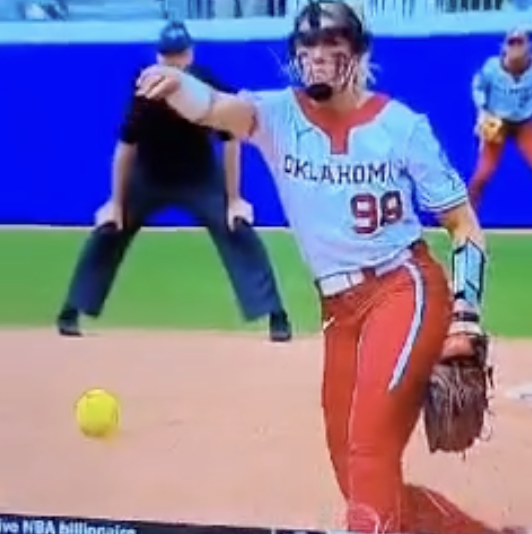
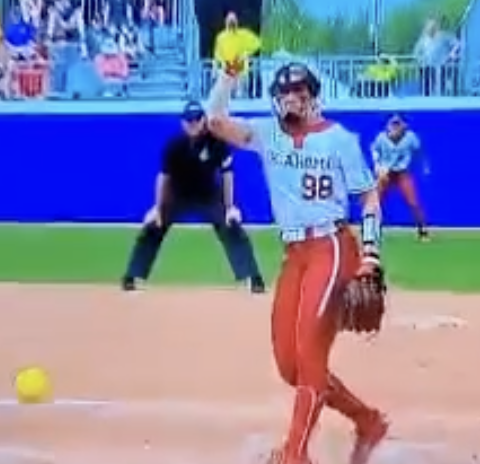
Where did the term Hello Elbow come from?
This collection of bad mechanics slowly infiltrated the softball world in the 90s and really became popular in the early 2000s because of people like Finch pushing it. Every young girl in the early 2000s (myself included) wanted to be like Jennie Finch. There is a famous video of her on Youtube describing “how to pitch”, calling her follow through the “Hello Elbow Zone”.

I don’t know exactly how or why it started, but it started somewhere and spread like wildfire. I suspect that people in Southern California, being exceptional at softball during that time (So Cal in the late 90s was the epicenter of softball), falsely attributed pitching success to Hello Elbow.
Internal Rotation is not new, Hello Elbow is. Internal rotation is how all successful pitchers have pitched since Eddie Feigner stepped on the mound in the 50s.
Why do people think it’s safe?
There are likely many reasons why people think this, but as someone who has dedicated much of their life to softball pitching and finding the truth, I think I have some answers. The work of Sherry Werner is often the most cited example of a “study” proving that HE is safe. I put study in quotations because she mainly just video taped (yes, video TAPE) pitchers during the 1996 Olympics and determined that ending bicep up was safe for the shoulder.
I don’t think I need to tell the adults, but to any kids reading this… you have no idea how low of a frame rate and how blurry video TAPING used to be. Even with my high frame rate camera on my cell phone, some parts of the pitching motion are blurry because of how fast the pitcher is moving. The actual film has never been released, but a report has.
In order to do a true, scientific study, you can’t just video players. I long for the day a true scientific study occurs, along with some type of 4D Motion software and true slow motion analysis.
Here is a great thread on Discuss Fastpitch about Sherry Werner
If people want to cite Werner, I will cite Dr. Marion J.L. Alexander, PhD.
I’ll quote BoardMember from DFP here:
“Her background includes:
PhD in Biomechanics – University of Alberta
Masters in Science, Physical Education, Kinesiology – University of Washington
Bachelor of Physical Education – University of British Columbia
She is also the Director of the Biomechanics, Sport and Human Performance Laboratory and the Head of the Sport and Human Performance Research Group. I believe she is AS, if not MORE qualified then Dr. Werner on this subject.”
Here is her report: Softball Pitching Motion
Here are some of my favorite parts:
The hips should NOT be fully open:
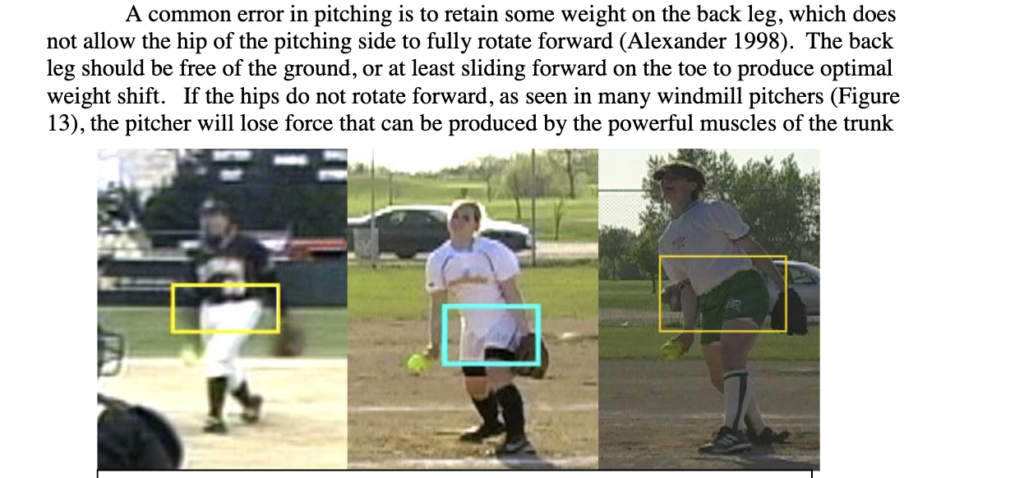
Hip rotation and offset stretch is important:
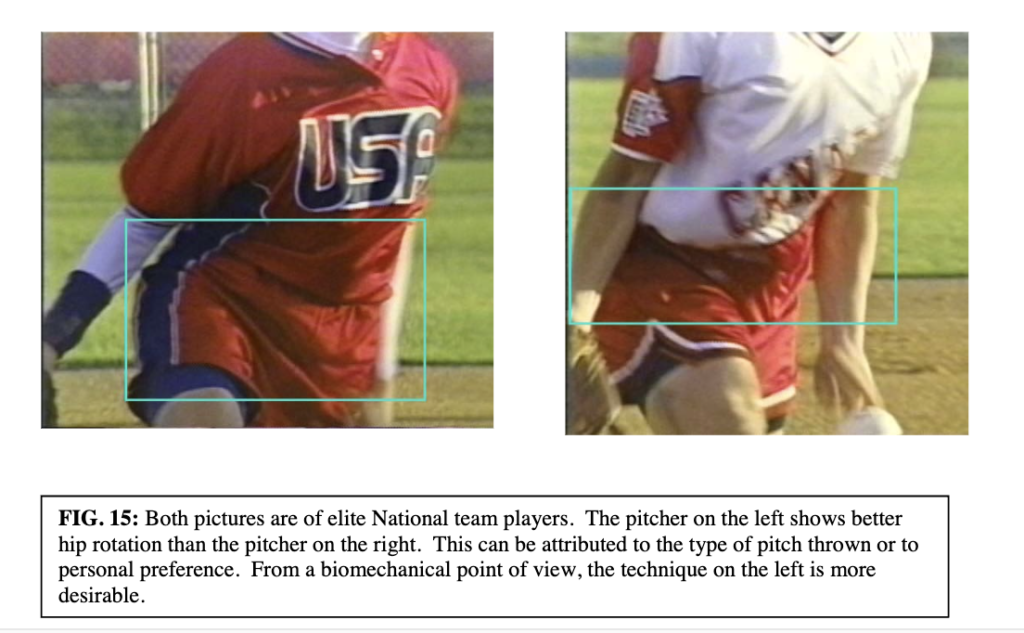
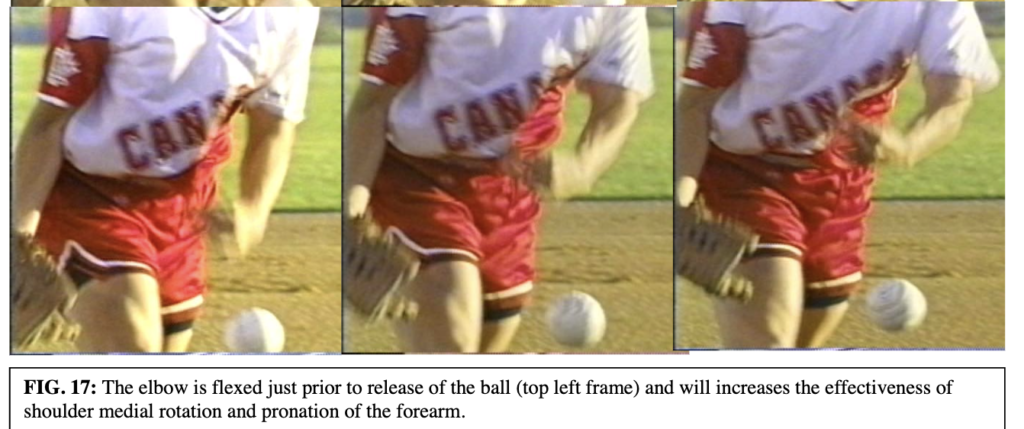
Elbow flexion is crucial and the lower arm should pronate:
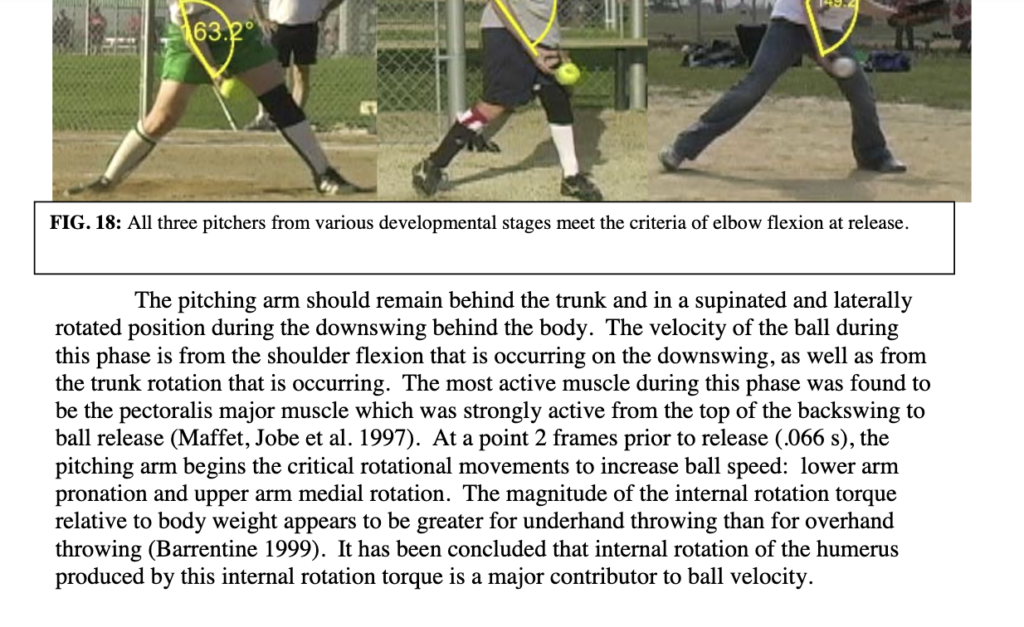
Brush is important:

“Research has shown less rotator cuff activity in pitchers that contact their thigh with the humerus at release. This may lead to fewer rotator cuff injuries in pitchers that adopt this strategy.”
Pronation occurs:
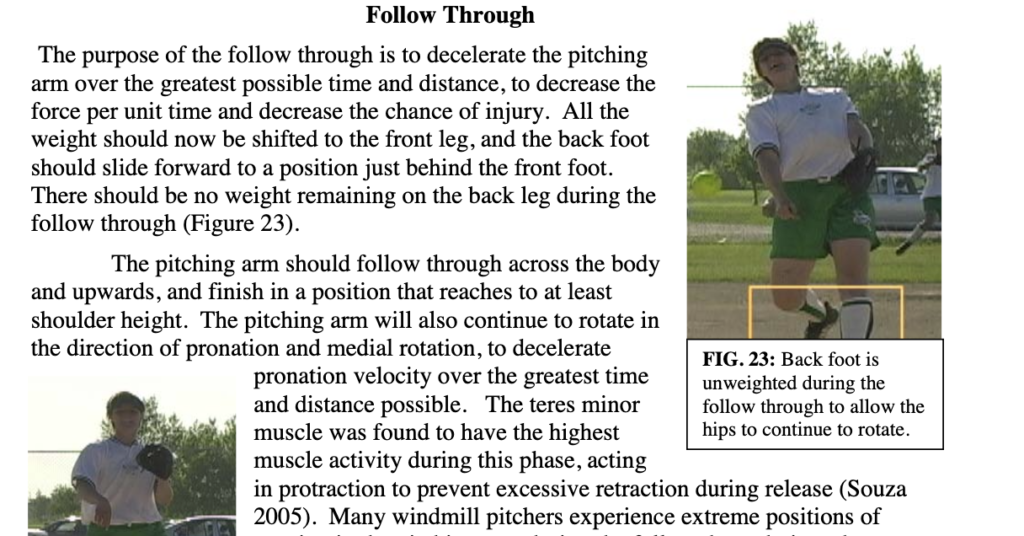
“The pitching arm will continue to rotate in the direction of pronation and medial rotation to decelerate pronation velocity over the greatest time and distance possible.”
My pitching coach doesn’t teach IR but doesn’t say they teach Hello Elbow
Most PC’s who teach HE don’t realize they are teaching it, nor do they realize there is something else. When I was teaching HE, I was taught “this is how you pitch”. (Which was silly because I was taught originally by Doug Gillis, one of the best in the world.) I had no idea what HE or IR was. I was just told that this is how Jennie Finch and others from Southern California pitch, so it has to be correct. PC’s that teach Hello Elbow most likely don’t know they are teaching it. And some don’t know they are teaching an inferior technique. Here are the signs they are NOT teaching Internal Rotation:
- Telling the student to get open really early
- Telling the student to stay open throughout the entire pitch
- Wrist snaps
- Telling the student to have the ball facing second when in a T position
- Following through high
Thanks for reading. As always, say no to Hello Elbow!
